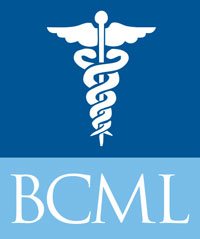When traveling to or staying temporarily in a country, healthcare coverage may not seem necessary since your stay may be short. However, health emergencies are always a possibility and being without insurance is far more costly than paying for temporary coverage. More importantly, in Canada, it is a requirement for international students to have health coverage.
It is also important to note that while there is a national healthcare system, much of Canada’s healthcare is determined by individual provinces. Therefore, as an international student, the type of coverage you are eligible for will be dependent on where you will be studying.
Here we will look at what coverage is available to international students in Canada and how you can protect yourself while studying in another country.
Overview of Canadian Health Insurance for International Students
If you are new to Canada, it is likely that you have heard that healthcare is free. While Canada does have a tax funded national medicare system that covers basic health services and emergency care, individual provinces have their own coverage for permanent residents.
For example, Ontario residents are covered under the Ontario Health Insurance Plan (OHIP). As a non-permanent resident you would not be covered under OHIP but you would have access to the University Health Insurance Plan (UHIP).
Moreover, it is important to note that some services are not covered for students or residents such as most dental care. For services like this, private insurance is required for everyone.
Differences in Coverage Between Provinces
One of the most important things to understand as an international student in Canada is that some provinces will provide health coverage while others will expressly require you to purchase private health insurance.
Provinces and Territories that DO Provide Health Insurance Coverage to International Students
Alberta: Alberta provides health insurance for students who have a student permit for at least 12 months. Those with shorter permits may be eligible if they can prove that they plan to stay in the province for at least a year, regardless of if they will be enrolled in classes during that time. If you will not be in Alberta for this long, you will likely need private insurance.
British Columbia: In B.C., you are eligible for coverage if you have at least a 6 month student permit. However, coverage does not start until the first day of the third month of your stay. Due to this, you may still need to consider private insurance for the first few months.
New Brunswick: Like Alberta, New Brunswick requires you to be a student for 12 months. You will also need to show proof of full-time enrollment in a university.
Manitoba: Students who have at least a 6 month study permit will be eligible for coverage under the province’s healthcare system.
Newfoundland and Labrador: Students are eligible with a 12 month study permit.
Northwest Territories: Students are eligible with a 12 month study permit.
Nova Scotia: Nova Scotia does have student insurance but only if you will be a student for 12 months and staying longer than a year. You cannot apply until after you have already been a student for a year so private insurance options will likely still be needed. For example, if you begin study in Nova Scotia in August, you will not be able to apply for insurance until the following September.
Saskatchewan: Yes as long as you are enrolled full time.
Provinces and Territories that DO NOT Provide Health Insurance Coverage to International Students
Ontario: Ontario does not cover students under OHIP but most universities do participate in the University Health Insurance Plan which offers similar coverage.
Prince Edward Island: PEI requires private insurance though some universities do offer their own program.
Quebec: Depending on your home country, you may be eligible for insurance in Quebec. Student scholarships may also include coverage here.
Yukon: While the Yukon territory is large, it is not densely populated and only has one university. Due to this, insurance resources for international students are not available.
Note: As you can see from the list, while most provinces do offer health insurance, there are several requirements and/or wait periods. In each of these cases you may still need private insurance as you wait for provincial insurance.
More importantly, these rules can change or vary depending on the school you attend, your major, citizenship status, etc. Therefore it is important to check the individual requirements of the province you plan to study in before making plans for travel.
What is Not Covered Under Canadian Health Insurance?
Contrary to popular belief, not all medical services are free in Canada though most basic healthcare and emergency services are free or offered at a reduced cost. However, since the real cost of these is paid largely through taxes, coverage is limited to permanent residents who will also have some out of pocket costs.
For both residents and international students there are several services that are typically not covered or only covered under certain circumstances, including:
- Dental: major dental surgery is covered while routine cleanings are not.
- Vision: eye exams are covered but eyewear is not.
- Cosmetic Surgery: surgery for aesthetic reasons is not covered though you may be able to appeal for certain procedures to be covered if you are in pain or having difficulties beyond cosmetic concerns.
- Chiropractic and Physical Therapy: Both of these services are unlikely to be covered but supplemental insurance may help. There are exceptions for children and senior citizens.
- Mental Health: Mental health care is only covered when provided by a medical professional such as a psychiatrist. Alternative therapies are not eligible.
- Prescriptions: Prescriptions that are not administered as part of a hospital stay are not covered. However, there are supplemental insurance options and Canada works to keep the cost of prescriptions as low as possible.
Medical Help in Canada Without Insurance
If you find yourself in need of medical help while not covered, one of your best options is to seek care at a walk-in clinic for any non-emergency issues. Bay College Medical and Lockwood Diagnostic walk-in clinic in Toronto offers a range of affordable and convenient medical services including physical therapy, dental, and vision. To learn more about what BCML can do for your healthcare, contact us at 416-929-1900.





